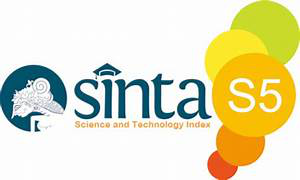PERTARUNGAN WACANA PEMERINTAH DAN PUBLIK TENTANG PANDEMI COVID-19
Abstract
The Covid-19 pandemic around the world has caused various problems, especially in the health and economic sectors. Various efforts have been made by the government to overcome the impact of Covid-19. One of the government's efforts is to carry out various public communication strategies to influence public discourse and behavior in order to avoid the virus. However, the government's efforts to construct public discourse must deal with other discourses that are sourced from information spread on the internet. This article seeks to understand the construction of government discourse and other discourses by using secondary data from internet. The conclusion that can be drawn is that the discourse constructed by the government in an effort to deal with the impact of the Covid-19 pandemic is that there is always a middle way between health interests and economic interests. People must remain productive at work while maintaining health. Meanwhile, another public discourse that has also developed is that Covid-19 is a form of global conspiracy that aims to destabilize the world economy.
Keywords
References
Arriani, Aulia, dkk, Persepsi Masyarakat Terhadap COVID-19, Suara Komunitas Edisi Pertama Agustus 2020
Berger, Peter L. and Thomas Luckmann. 1967. The Social Construction Of Reality: A Treatise In The Sociology Of Knowledge. Penguin Books,
Limia, Putri dan Benazir Bona Pratamawaty, Google Trends dan Tren Pencarian Informasi COVID-19 di Indonesia, Jurnal ASPIKOM, Vol.5, No.2, July 2020, hlm. 188-205
Littlejohn, Stephen W., Karen A. Foss, editors. 2009. Encyclopedia Of Communication Theory. Thousand Oaks, Calif. :Sage,
Wilujeng, Catur Saptaning dan Tatag Handaka, 2017. Komunikasi Kesehatan: Sebuah Pengantar, Malang: UB Press,
DOI: 10.33751/jpsik.v5i1.3289
Refbacks
- There are currently no refbacks.

This work is licensed under a Creative Commons Attribution-ShareAlike 4.0 International License.












